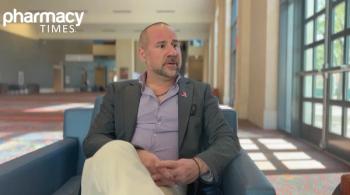
Using Information Technology to Address Medication Adherence
At the 2018 National Community Oncology Dispensing Association (NCODA) Spring Summit, Howard Cohen, RPh, MS, FASHP, from Smilow Cancer Hospital, Yale-New Haven Health, discusses how information technology can be utilized to improve medication adherence on patients with cancer.
At the 2018 National Community Oncology Dispensing Association (NCODA) Spring Summit, Howard Cohen, RPh, MS, FASHP, from Smilow Cancer Hospital, Yale-New Haven Health, discusses how information technology can be utilized to improve medication adherence on patients with cancer.
Transcript: “On how patients are able to understand how they are to take their medication, we’re very concerned about oral chemotherapy because, traditionally what we’ve done—we’ve been very good at taking care of the patient in the hospital, as they transition from in-patient to the infusion center, but once they leave the hospital, we we’re really giving it away to the specialty pharmacies or the home infusion companies. Clearly that’s something that we needed to address. So, when we talk about adherence, and the whole issue of IT, it’s really developing a process to make sure patients are able to adhere to the safety of the medication, that they understand the education of the oral medication that they’re going to be taking because we’re transitioning the care again from a hospital setting to a home, and transitioning the care from providers and nurses to really only home care, which is a very big difference. The ability for the patient to understand the education, the side effect profile, the monitoring requirements, and we talk about adherence again is understanding how they’re supposed to take their medication, are able to comply with it. So developing a process utilizing information technology is a tool that we can use—information technology is always a tool. The ability to use that tool to help improve adherence, so the patient takes the medication appropriately is what we’re really interested in.”
Newsletter
Stay informed on drug updates, treatment guidelines, and pharmacy practice trends—subscribe to Pharmacy Times for weekly clinical insights.


















































































































































































































